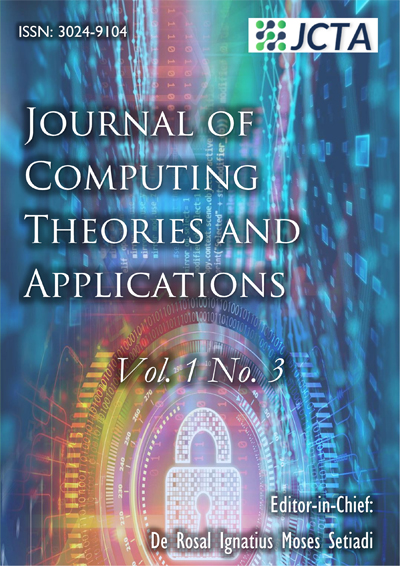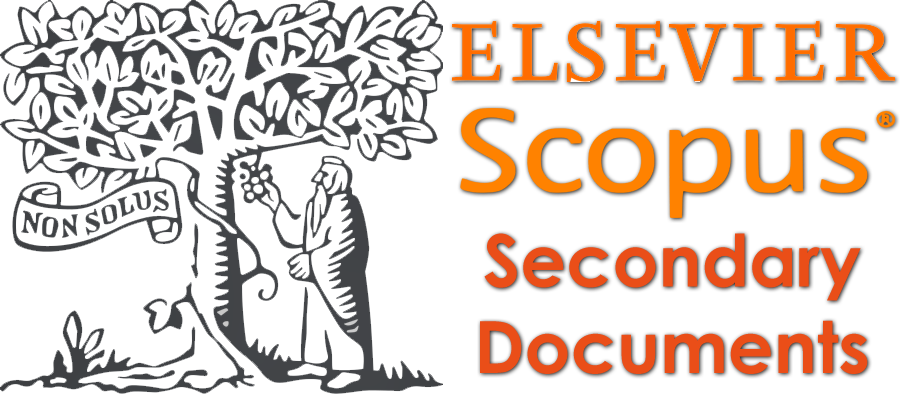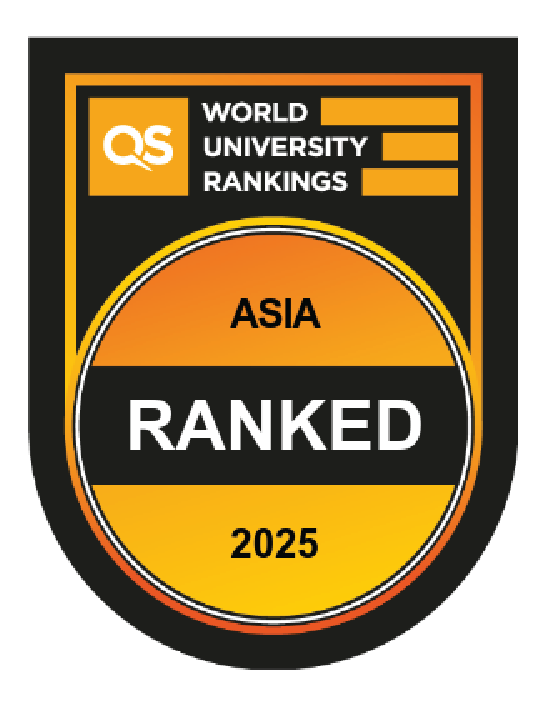A Comparative Analysis of Generative Artificial Intelligence Tools for Natural Language Processing
DOI:
https://doi.org/10.62411/jcta.9447Keywords:
Artificial Intelligence, AI Planning, AI Tools, Comparative Analysis, Generative AI, Natural Language ProcessingAbstract
Generative artificial intelligence tools have recently attracted a great deal of attention. This is because of their huge advantages, which include ease of usage, quick generation of answers to requests, and the human-like intelligence they possess. This paper presents a vivid comparative analysis of the top 9 generative artificial intelligence (AI) tools, namely ChatGPT, Perplexity AI, YouChat, ChatSonic, Google's Bard, Microsoft Bing Assistant, HuggingChat, Jasper AI, and Quora's Poe, paying attention to the Pros and Cons each of the AI tools presents. This comparative analysis shows that the generative AI tools have several Pros that outweigh the Cons. Further, we explore the transformative impact of generative AI in Natural Language Processing (NLP), focusing on its integration with search engines, privacy concerns, and ethical implications. A comparative analysis categorizes generative AI tools based on popularity and evaluates challenges in development, including data limitations and computational costs. The study highlights ethical considerations such as technology misuse and regulatory challenges. Additionally, we delved into AI Planning techniques in NLP, covering classical planning, probabilistic planning, hierarchical planning, temporal planning, knowledge-driven planning, and neural planning models. These planning approaches are vital in achieving specific goals in NLP tasks. In conclusion, we provide a concise overview of the current state of generative AI, including its challenges, ethical considerations, and potential applications, contributing to the academic discourse on human-computer interaction.References
J. Wen and W. Wang, “The future of ChatGPT in academic research and publishing: A commentary for clinical and translational medicine,” Clin. Transl. Med., vol. 13, no. 3, Mar. 2023, doi: 10.1002/ctm2.1207.
D. O. Eke, “ChatGPT and the rise of generative AI: Threat to academic integrity?,” J. Responsible Technol., vol. 13, p. 100060, Apr. 2023, doi: 10.1016/j.jrt.2023.100060.
A. Graf and R. E. Bernardi, “ChatGPT in Research: Balancing Ethics, Transparency and Advancement,” Neuroscience, vol. 515, pp. 71–73, Apr. 2023, doi: 10.1016/j.neuroscience.2023.02.008.
L. Li, Z. Ma, L. Fan, S. Lee, H. Yu, and L. Hemphill, “ChatGPT in education: A discourse analysis of worries and concerns on social media,” Apr. 2023, [Online]. Available: http://arxiv.org/abs/2305.02201.
H. H. Thorp, “ChatGPT is fun, but not an author,” Science (80-. )., vol. 379, no. 6630, pp. 313–313, Jan. 2023, doi: 10.1126/science.adg7879.
Y. K. Dwivedi et al., “Opinion Paper: ‘So what if ChatGPT wrote it?’ Multidisciplinary perspectives on opportunities, challenges and implications of generative conversational AI for research, practice and policy,” Int. J. Inf. Manage., vol. 71, p. 102642, Aug. 2023, doi: 10.1016/j.ijinfomgt.2023.102642.
B. Burger, D. K. Kanbach, S. Kraus, M. Breier, and V. Corvello, “On the use of AI-based tools like ChatGPT to support management research,” Eur. J. Innov. Manag., vol. 26, no. 7, pp. 233–241, Dec. 2023, doi: 10.1108/EJIM-02-2023-0156.
A. Fostikov, “First impressions on using AI powered chatbots, tools and search engines: ChatGPT, Perplexity and other – possibilities and usage problems,” Humanities Commons, no. 42. pp. 12–21, 2023. doi: 10.17613/9t6p-2229.
J. Haase and P. H. P. Hanel, “Artificial muses: Generative artificial intelligence chatbots have risen to human-level creativity,” J. Creat., vol. 33, no. 3, p. 100066, Dec. 2023, doi: 10.1016/j.yjoc.2023.100066.
S. S. Gill and R. Kaur, “ChatGPT: Vision and challenges,” Internet Things Cyber-Physical Syst., vol. 3, pp. 262–271, 2023, doi: 10.1016/j.iotcps.2023.05.004.
A. Vaswani et al., “Attention is All you Need,” in Advances in Neural Information Processing Systems, 2017, vol. 30. [Online]. Available: https://proceedings.neurips.cc/paper_files/paper/2017/file/3f5ee243547dee91fbd053c1c4a845aa-Paper.pdf.
V. Taecharungroj, “‘What Can ChatGPT Do?’ Analyzing Early Reactions to the Innovative AI Chatbot on Twitter,” Big Data Cogn. Comput., vol. 7, no. 1, p. 35, Feb. 2023, doi: 10.3390/bdcc7010035.
S. A. Thorat and V. Jadhav, “A Review on Implementation Issues of Rule-based Chatbot Systems,” SSRN Electron. J., 2020, doi: 10.2139/ssrn.3567047.
P. M. Nadkarni, L. Ohno-Machado, and W. W. Chapman, “Natural language processing: an introduction,” J. Am. Med. Informatics Assoc., vol. 18, no. 5, pp. 544–551, Sep. 2011, doi: 10.1136/amiajnl-2011-000464.
S. Singh and H. K. Thakur, “Survey of Various AI Chatbots Based on Technology Used,” in 2020 8th International Conference on Reliability, Infocom Technologies and Optimization (Trends and Future Directions) (ICRITO), Jun. 2020, pp. 1074–1079. doi: 10.1109/ICRITO48877.2020.9197943.
B. Deshpande and M. B. Chandak, “A survey of designing tools for chatbot application,” Int. J. Health Sci. (Qassim)., pp. 1403–1413, Jun. 2022, doi: 10.53730/ijhs.v6nS5.8889.
I. Ahmed, M. Kajol, U. Hasan, and P. P. Datta, “ChatGPT vs. Bard: A Comparative Study.” TechRxiv, Jul. 2023. doi: 10.36227/techrxiv.23536290.v2.
G. Kiryakova and N. Angelova, “ChatGPT—A Challenging Tool for the University Professors in Their Teaching Practice,” Educ. Sci., vol. 13, no. 10, p. 1056, Oct. 2023, doi: 10.3390/educsci13101056.
A. Singh, T. Dwivedi, S. Bulchandani, B. Dwivedi, R. Sharma, and A. Kaur, “Pros and Cons of Using ChatGPT in Medical Research and Publishing – A Comprehensive Review,” Am. J. Med. Case Reports., vol. 11, no. 10, pp. 161–163, 2023, doi: 10.12691/ajmcr-11-10-1.
J. Zhao, X. Han, M. Ouyang, and A. F. Burke, “Specialized deep neural networks for battery health prognostics: Opportunities and challenges,” J. Energy Chem., vol. 87, pp. 416–438, Dec. 2023, doi: 10.1016/j.jechem.2023.08.047.
A. C. Kavak, “ChatGPT, Google Bard, Microsoft Bing, Claude, and Perplexity: Which is the Right AI Tool?,” Zeo.org, 2023. https://zeo.org/resources/blog/chatgpt-google-bard-microsoft-bing-claude-and-perplexity-which-is-the-right-ai-to.
F. Somoye, “What is Perplexity AI and what are its uses?,” PC Guide, 2023. https://www.pcguide.com/apps/perplexity-ai/ (accessed Mar. 27, 2023).
M. Spencer, “What is Perplexity AI?,” Machine Economy Press, 2022. https://datasciencelearningcenter.substack.com/p/what-is-perplexity-ai-chat-gpt (accessed Mar. 27, 2022).
K. Haider, “5 Chatbots Like ChatGPT To Have Human-Like Conversations,” Geekfalre, 2023. https://geekflare.com/chatbots-like-chatgpt/ (accessed Mar. 27, 2023).
A. Rangwala, “What is ChatSonic?,” Open AI Master, 2023. https://openaimaster.com/what-is-chatsonic/ (accessed May 30, 2023).
R. Thoppilan et al., “LaMDA: Language Models for Dialog Applications.” Jan. 20, 2022. [Online]. Available: http://arxiv.org/abs/2201.08239.
H. Dhaduk, “The Complete Guide to Google Bard: Features, Benefits, and Use Cases,” Simform, 2023. https://www.simform.com/blog/the-complete-guide-to-google-bard/ (accessed Jun. 06, 2023).
J. Ribas, “Building the New Bing,” Bing Blogs, 2023. https://blogs.bing.com/search-quality-insights/february-2023/Building-the-New-Bing/ (accessed Jun. 01, 2023).
A. Köpf et al., “OpenAssistant Conversations -- Democratizing Large Language Model Alignment.” Apr. 14, 2023. [Online]. Available: http://arxiv.org/abs/2304.07327.
G. Dheda, “What Is HuggingChat? Benefits, Limitations, Use & More,” Open AI Master, 2023. https://openaimaster.com/huggingchat/ (accessed Jun. 16, 2023).
B. Steven, “Jasper AI vs. Chat GPT-4: What’s the Difference, and Which Is Better,” History-Computer, 2023. https://history-computer.com/jasper-ai-vs-chatgpt-4/ (accessed Jun. 19, 2023).
S. Morreel, V. Verhoeven, and D. Mathysen, “Microsoft Bing outperforms five other generative artificial intelligence chatbots in the Antwerp University multiple choice medical license exam,” PLOS Digit. Heal., vol. 3, no. 2, p. e0000349, Feb. 2024, doi: 10.1371/journal.pdig.0000349.
I. Abdallah, Firas Anis, “A Survey on Search Engine Optimization (SEO),” Int. J. Comput. Commun. Instrum. Eng., vol. 4, no. 2, Oct. 2017, doi: 10.15242/IJCCIE.AE0417136.
M. J. Cafarella and O. Etzioni, “A search engine for natural language applications,” in Proceedings of the 14th international conference on World Wide Web - WWW ’05, 2005, p. 442. doi: 10.1145/1060745.1060811.
S. Colton, A. Smithn, S. Berns, R. Murdock, and M. Cook, “Generative Search Engines: Initial Experiments,” in Proceedings of the 12th International Conference on Computational Creativity (ICCC ’21), 2021, pp. 237–246. [Online]. Available: https://computationalcreativity.net/iccc21/wp-content/uploads/2021/09/ICCC_2021_paper_50.pdf.
N. F. Liu, T. Zhang, and P. Liang, “Evaluating Verifiability in Generative Search Engines.” Apr. 19, 2023. [Online]. Available: http://arxiv.org/abs/2304.09848.
S. Biswas, D. Dobaria, and H. L. Cohen, “ChatGPT and the Future of Journal Reviews: A Feasibility Study,” Yale J. Biol. Med., vol. 96, no. 3, pp. 415–420, Sep. 2023, doi: 10.59249/SKDH9286.
C. K. Lo, “What Is the Impact of ChatGPT on Education? A Rapid Review of the Literature,” Educ. Sci., vol. 13, no. 4, p. 410, Apr. 2023, doi: 10.3390/educsci13040410.
N. Tang, C. Yang, J. Fan, L. Cao, Y. Luo, and A. Halevy, “VerifAI: Verified Generative AI.” Jul. 06, 2023. [Online]. Available: http://arxiv.org/abs/2307.02796.
J. D. Weisz, M. Muller, J. He, and S. Houde, “Toward General Design Principles for Generative AI Applications.” Jan. 13, 2023. [Online]. Available: http://arxiv.org/abs/2301.05578.
S. Bagchi and The Conversation US, “Why We Need to See Inside AI’s Black Box,” Scientific American, 2023. https://www.scientificamerican.com/article/why-we-need-to-see-inside-ais-black-box/ (accessed Nov. 21, 2023).
W. Kim, “Limitations on Granting Copyrights to AI-Generated Works and Alternative Protection Methodologies,” Korea Copyr. Comm., vol. 142, pp. 33–76, Jun. 2023, doi: 10.30582/kdps.2023.36.2.33.
T. Gomez, T. Fréour, and H. Mouchère, “Comparison of attention models and post-hoc explanation methods for embryo stage identification: a case study.” May 13, 2022. [Online]. Available: http://arxiv.org/abs/2205.06546.
R. Das, L. Favaro, T. Heimel, C. Krause, T. Plehn, and D. Shih, “How to understand limitations of generative networks,” SciPost Phys., vol. 16, no. 1, p. 031, Jan. 2024, doi: 10.21468/SciPostPhys.16.1.031.
F. Friedrich et al., “Fair Diffusion: Instructing Text-to-Image Generation Models on Fairness,” Feb. 2023, [Online]. Available: http://arxiv.org/abs/2302.10893.
Ö. Aydin and E. Karaarslan, “Is ChatGPT Leading Generative AI? What is Beyond Expectations?,” Acad. Platf. J. Eng. Smart Syst., vol. 11, no. 3, pp. 118–134, Sep. 2023, doi: 10.21541/apjess.1293702.
“10 ChatGPT Alternatives & Competitors (Free and Paid),” PCWorld, 2023. https://www.pcworld.com/article/2086819/chatgpt-alternatives.html (accessed Dec. 08, 2023).
N. Roza, “Bing AI Chat Statistics Facts and Trends for 2024- Everything You Need to Know!,” 2023. https://nikolaroza.com/bing-chat-statistics-facts-trends/ (accessed Dec. 08, 2023).
M. Sullivan, “Is Perplexity AI showing us the future of search?,” 2023. https://www.fastcompany.com/90883562/is-perplexity-ai-showing-us-the-future-of-search (accessed Dec. 08, 2023).
Jasper, “Jasper vs. ChatGPT: Which is Right For You? [2023],” 2023. https://www.jasper.ai/comparison/jasper-vs-chatgpt (accessed Dec. 08, 2023).
G. Koromila, “How to use generative AI with a critical (but open) mind-Generative Artificial Intelligence and University Study,” University of Reading, 2023.
G. Pavlik, “What Is Generative AI? How Does It Work?,” Oracle.com, 2023.
Binmile, “What Ethical Concerns Are Associated with Generative AI?,” Binmile Newsletter, 2023. https://www.linkedin.com/pulse/what-ethical-concerns-associated-generative-ai-binmile (accessed Dec. 10, 2023).
N. de Bellefonds, D. Kleine, M. Grebe, C. Ewald, and C. Nopp, “What’s Dividing the C-Suite on Generative AI?,” BCG, 2023. https://www.bcg.com/publications/2023/c-suite-genai-concerns-challenges (accessed Dec. 10, 2023).
E. Alnazer and I. Georgievski, “Understanding Real-World AI Planning Domains: A Conceptual Framework,” in Service-Oriented Computing, 2023, pp. 3–23. doi: 10.1007/978-3-031-45728-9_1.
K. Jin and H. H. Zhuo, “Integrating AI Planning with Natural Language Processing: A Combination of Explicit and Tacit Knowledge.” Feb. 14, 2022. [Online]. Available: http://arxiv.org/abs/2202.07138.
S. Graef and I. Georgievski, “Software Architecture for Next-Generation AI Planning Systems.” Feb. 22, 2021. [Online]. Available: http://arxiv.org/abs/2102.10985.
J. Rintanen and J. O. Hoffmann, “An Overview of Recent Algorithms for AI Planning,” Kuenstliche Intelligenz, vol. 2, no. 1, 2001.
L. Pineda and S. Zilberstein, “Probabilistic Planning with Reduced Models,” J. Artif. Intell. Res., vol. 65, pp. 271–306, Jul. 2019, doi: 10.1613/jair.1.11569.
J. A. Wolfe, “Hierarchical Methods for Optimal Long-Term Planning,” UC Berkeley, 2011.
S. Jiménez, A. Jonsson, and H. Palacios, “Temporal Planning With Required Concurrency Using Classical Planning,” in Proceedings of the International Conference on Automated Planning and Scheduling, Apr. 2015, vol. 25, pp. 129–137. doi: 10.1609/icaps.v25i1.13731.
A. Tate, “A Review of knowledge-based planning techniques,” Knowl. Eng. Rev., vol. 1, no. 2, pp. 4–17, Jun. 1984, doi: 10.1017/S0269888900000485.
D. E. Wilkins and M. DesJardins, “A Call for Knowledge-Based Planning,” AI Mag., vol. 22, no. 1, pp. 99–115, 2001, doi: 10.1609/aimag.v22i1.1547.
T. Caglar, S. Belhaj, T. Chakraborti, and S. Katz, Michael Sreedharan, “Towards More Likely Models for AI Planning,” in NeurIPS 2023 Workshop on Generalization in Planning, 2023. [Online]. Available: https://openreview.net/pdf?id=eIROHscxeg.
Downloads
Published
How to Cite
Issue
Section
License
Copyright (c) 2024 Aamo Iorliam

This work is licensed under a Creative Commons Attribution 4.0 International License.















